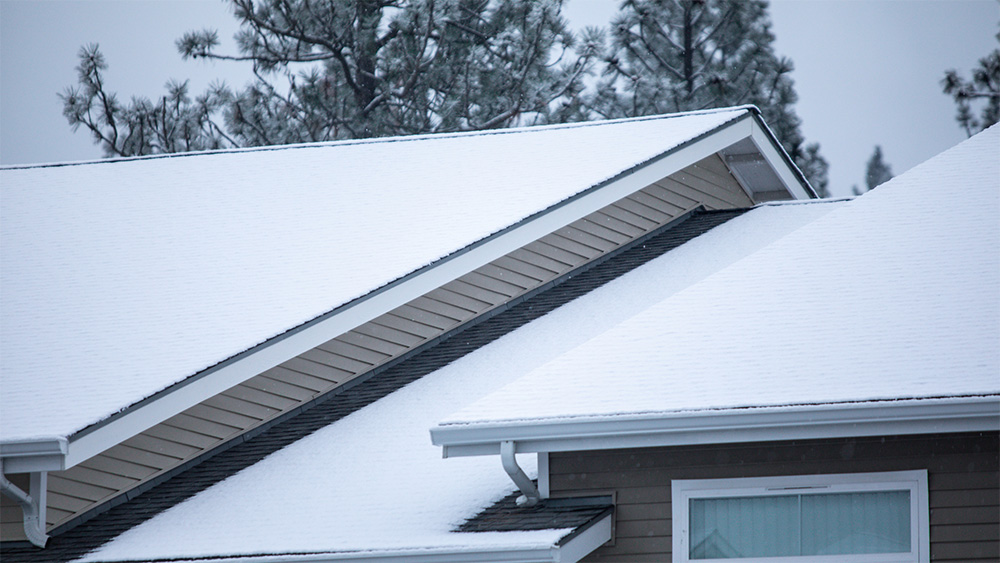That makes for a great song title, but snow’s not as much fun when it’s piling on top of your roof. The consequences of too much snow buildup include water damage, leakage, and sometimes even collapse. If you own a home in a cold climate, it might be time to educate yourself on how snow and ice can negatively affect your roof and what preventative measures can help you avert a disaster.
The answer is – it depends. Here are some things to consider:
Building codes in your area will determine how much snow your roof is built to withstand, but most require a high threshold. An average of two feet of wet snow or four feet of dry snow is typical. And while by mid-winter, you’ll probably have a combination of snow and ice, most likely, your roof should be able to withstand up to 30 to 35 pounds of snow.
You should do visual checks throughout the year, both inside and outside of your house. Catching problems early can help prevent severe issues and reduce potential costs. Check for cracks, leaks, or buckling. If you hear cracking or popping sounds, whether inside or outside of your house, it may be a warning that your roof is experiencing stress from too much weight. Also, if a severe storm has passed through your area, it may be worth getting a professional damage assessment. This can catch problems early before they become disasters.
We recommend hiring professionals – trained, insured, and come with the right equipment for the job. Arrange this service during the summer or fall months – before you need it. If you want to do the job yourself, make sure you take all safety precautions. Purchase a snow rake with a handle extension to help with hard-to-reach areas of your roof. A snow rake may even allow you to stay on the ground and remove enough snow to relieve stress on your roof.
Ice dams not only contribute to snow buildup on your roof, but they can also cause damage in their own right. Snowmelt from your roof flows into the eaves; if these become clogged, it results in an ice dam, creating another risk for water damage. A tell-tell sign is the buildup of icicles from your eaves.
To prevent ice dams, keep your attic insulated so that your home's temperature doesn’t affect the roof (causing increased snowmelt), and clean your gutters regularly. Debris in the gutters can intensify ice dams.
If you’d like to discuss your current home insurance, give Sea Mountain Insurance a call or contact us for more information. We’re happy to answer your questions.
